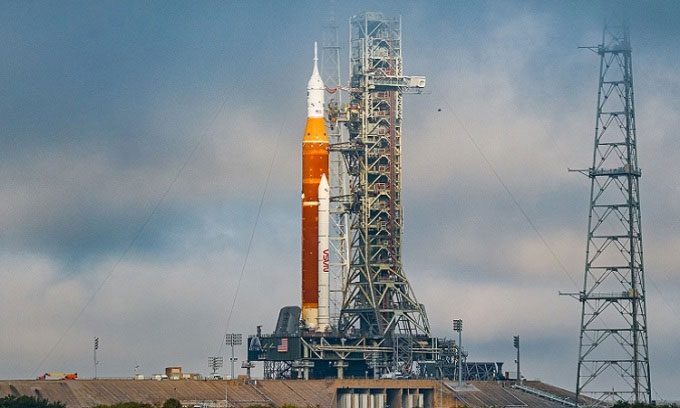NASA Conducts Test of the Massive Space Launch System (SLS) Rocket for Manned Moon Missions on April 1

SLS rocket ready for fuel testing. (Photo: NASA)
The SLS Rocket was transported to NASA’s launch pad at the Kennedy Space Center two weeks ago after several years of development. This rocket is a cornerstone of the plan to send NASA astronauts back to the Moon for the first time in decades, followed by missions to Mars.
The first flight of the SLS is scheduled for late 2022 as part of the Artemis mission. The rocket will launch the uncrewed Orion spacecraft on a mission to orbit the Moon. The journey is expected to last 4 to 6 weeks.
Prior to that, the SLS will undergo a series of tests to ensure all systems are operational. One of these is the wet dress rehearsal taking place today. This test will run from April 1 to 3. Engineers will fill the rocket with fuel and ignite the engines for a few seconds while simulating the countdown process before launch. However, the launch will be halted before the engines ignite.
At the start of the test, NASA staff will practice starting the necessary equipment as if for an actual rocket launch. Controllers will begin activating multiple systems on the rocket and ground support equipment. After that, more than 2.6 million liters of super-cooled propellant will be poured into the tanks. Engineers will also practice summarizing weather conditions and conducting pre-launch checks.
However, before the rocket engines ignite, controllers will push the sequence back by 10 minutes, practice the countdown again, and then halt the launch. A few days later, the SLS will be moved off the launch pad and returned to the Vehicle Assembly Building (VAB) for further adjustments and inspections. The rocket will not return to the launch pad until one week before the scheduled launch date. The SLS rocket stands 98 meters tall and weighs 2.6 million kilograms. Upon launch, it will generate a thrust of 39 million newtons.


















































